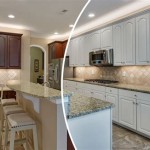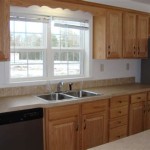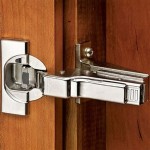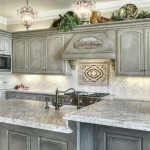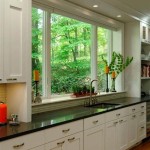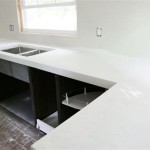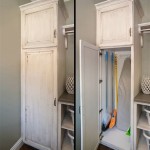MDF Kitchen Cabinet Doors Reviews
Medium-Density Fiberboard (MDF) has become a popular material for kitchen cabinet doors due to its versatility, affordability, and smooth finish. This review explores the advantages and disadvantages of MDF kitchen cabinet doors, covering various aspects from durability and moisture resistance to style options and cost considerations.
Advantages of MDF Kitchen Cabinet Doors
One of the primary advantages of MDF is its smooth, uniform surface. Unlike solid wood, MDF lacks knots and grain patterns, creating a consistent base for paint finishes. This characteristic makes it an ideal choice for achieving a sleek, modern look in kitchen designs. The smooth surface also allows for intricate detailing and routing, expanding design possibilities.
MDF is generally less expensive than solid wood, making it a budget-friendly option for kitchen renovations. The manufacturing process of MDF allows for consistent sizing and shapes, reducing material waste and contributing to lower production costs.
MDF offers excellent stability. Unlike solid wood, which can expand and contract with changes in temperature and humidity, MDF remains dimensionally stable. This stability reduces the risk of warping, cracking, or splitting, ensuring the longevity of the cabinet doors.
The consistent composition of MDF makes it an ideal substrate for various finishes. It readily accepts paint, allowing for a wide range of color options and finishes, from high-gloss to matte. MDF can also be veneered with natural wood to mimic the appearance of solid wood doors at a lower cost.
Disadvantages of MDF Kitchen Cabinet Doors
While MDF offers several advantages, it also has some limitations. One significant drawback is its susceptibility to moisture damage. MDF is composed of wood fibers and resin, and prolonged exposure to moisture can cause swelling and deterioration. This makes MDF less suitable for areas prone to high humidity or spills, such as around sinks and dishwashers. Proper sealing and preventative measures are essential to mitigate this risk.
MDF is generally not as durable as solid wood. While stable in terms of shape, it can be more easily dented or chipped compared to hardwood. This makes it less ideal for high-traffic kitchens or households with young children.
MDF is heavier than some other cabinet door materials, such as plywood. This added weight can put extra strain on cabinet hinges and hardware over time, potentially requiring more frequent maintenance or replacement.
While MDF can be painted effectively, achieving a truly smooth, professional finish often requires multiple coats of primer and paint. This can add time and labor costs to the finishing process.
Environmental Considerations
MDF is typically made from recycled wood fibers and resin binders, which can include formaldehyde. Concerns about formaldehyde emissions have led manufacturers to develop low-formaldehyde or formaldehyde-free MDF options, which are increasingly available. Consumers concerned about indoor air quality should look for these certified low-emission products.
Maintenance and Care
Proper maintenance is crucial for extending the lifespan of MDF kitchen cabinet doors. Regular cleaning with a damp cloth and mild detergent is recommended. Avoid abrasive cleaners or excessive moisture. Promptly clean up spills to prevent water damage. Inspect and tighten cabinet hardware regularly to ensure proper support and prevent stress on the doors.
Cost Considerations
MDF cabinet doors are typically more affordable than solid wood options, making them an attractive choice for budget-conscious homeowners. However, the cost can vary depending on the style, finish, and hardware chosen. Factors such as custom sizing and intricate detailing can also impact the final price.
Style Options
MDF's versatility allows for a wide range of style options. It can be crafted into various door profiles, from shaker-style to raised panel designs. The smooth surface lends itself well to contemporary and minimalist aesthetics, while veneered MDF can mimic the look of traditional wood cabinetry.
Comparison with other Cabinet Door Materials
Compared to solid wood, MDF offers a more affordable and stable alternative. However, it lacks the natural beauty and durability of hardwood. Compared to plywood, MDF provides a smoother surface for painting but is more susceptible to moisture damage. Each material has its own set of advantages and disadvantages, making it crucial to consider individual needs and priorities when selecting cabinet doors.
Choosing the Right MDF Kitchen Cabinet Doors
When choosing MDF kitchen cabinet doors, consider the specific needs of the kitchen environment. For high-moisture areas, ensure adequate sealing and ventilation. Opt for durable finishes and hardware to withstand daily use. Consider the overall style of the kitchen and choose door profiles and finishes that complement the design aesthetic. Research manufacturers and suppliers to ensure the quality and sustainability of the chosen products.

Mdf Kitchen Cabinets A Review

Why Mdf Kitchen Doors Are A Smart Choice Ekitchens

Why Mdf Has Become So Popular For Cabinet Doors Blog 180 Kitchens

Solid Wood Vs Mdf Is One Better Kitchen Design Partner

Mdf Kitchen Cabinets All You Need To Know

Mdf Kitchen Cabinets All You Need To Know

Mdf Kitchen Cabinets All You Need To Know

The Advantages Of Five Piece Mdf Doors Superior Cabinets

Mdf Vs Solid Wood Cabinet Doors Nieu

Practicality Of Cnc Cut Mdf Doors
Related Posts

